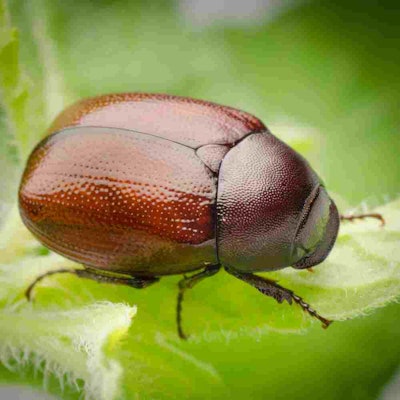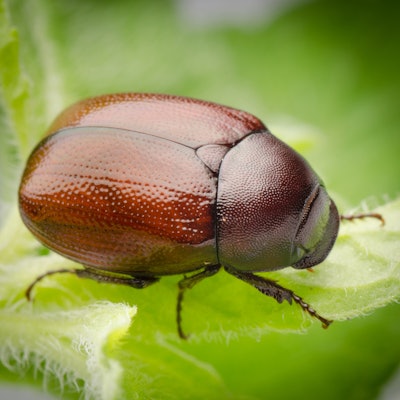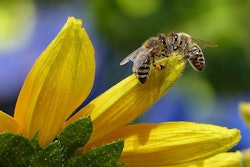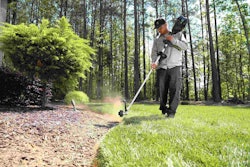

While these bugs are harmless to people, as they do not bite or sting, having insects pelting against the windows or buzzing around lights during an evening dinner party can be particularly irksome.
Below breaks down some information on these insects, when they are a threat to the landscape, and how to lessen their impact.
What are June bugs?
June bugs are beetles in the scarab family, and the Phyllophaga genus has more than 400 species of June bugs, making them hard to tell apart.
June bugs tend to be about one-half to five-eighths inches long and vary in color from reddish-brown to almost black. Also called June beetles and May beetles or bugs, the beetles get their name from how they tend to be most active in May and June.
There are also green June bugs, but these are smaller and less numerous than their brown counterparts.
The reason why the beetles are attracted to the light remains unsolved. Though scientists have proposed several hypotheses, there is no agreed reason why so many nocturnal insects have a love for lighting. They tend to exhaust themselves quickly and will be found dead the next morning for their obsession with the light fixture.
How do they damage the landscape?
While the adult June bugs can be a pain with their constant swarming around lights, it is their larvae that pose a threat to the landscape. June bugs’ larvae are whitish, C-shaped grubs that live underground.
These white grubs are laid in midsummer in sunny areas of the lawn. Females can lay up to 75 eggs in their short adult life. As the larvae grow, they eat the roots of grass depriving them of water and nutrients.
A lawn affected by grubs can appear to be experiencing drought stress with a yellowing or wilting appearance. Grubs can also kill small plants but have less of an effect on larger, more established plants with strong root systems.
Patches of brown grass in a yard of green can be a sign of grubs and if the turf rolls up like carpet, it means the roots have been eaten away. If a client’s yard has become spongy, this can also be a clue there is a grub infestation.
The number of grubs found per square foot will determine what action needs to be taken.
If there are zero to five grubs found, there is no need to treat. Even finding six to nine grubs in a healthy lawn requires no action, but the same number may require treatment if the lawn is less than healthy or if animals are digging up the grass. If 10 or more grubs are found, then the yard will become visibly damaged and treatment is needed.
Another side effect of a white grub infestation is an abundance of wildlife coming to dig and forage in the lawn for the larvae. Raccoons, skunks, armadillos, moles, and birds can worsen the situation by tearing up turfgrass looking for these grubs. Because these animals also dig for earthworms, it’s important to confirm that grubs are the culprit before treating the yard.
How can I control them?
When it comes to controlling the number of adult June bugs your customers have to deal with, the first option is reducing the white grub population in the lawn.
Some cultural practices that can discourage the beetles from laying their eggs in the yard include keeping the lawn mowed a little higher, as the females prefer to lay their eggs in very short grass. Keeping the turfgrass taller will also help it retain moisture and reduce the need for watering, as wet grass is also attractive to female June bugs.
If the lawn does need to be treated, timing is key, as immature grubs are more susceptible to pesticides. Insecticides such as carbaryl or cyfluthrin should be applied anywhere from midsummer to early fall, as the grubs are small and close to the surface. Watering after pesticide application can also help move the product into plant root zones.
Bacillus thuringiensis can also be used to kill larvae, which is a strain of soil bacteria that produce toxins that kill insects. Efficacy can vary for white grub species though, ranging from 55 to 100 percent control.
Another option is to advise your customer to invest in lights that shine in the red-yellow color spectrum, as the beetles tend to have trouble seeing these shades of light.
While there is no way to completely eliminate June bugs, you can help your customers by keeping the population at a tolerable level.










